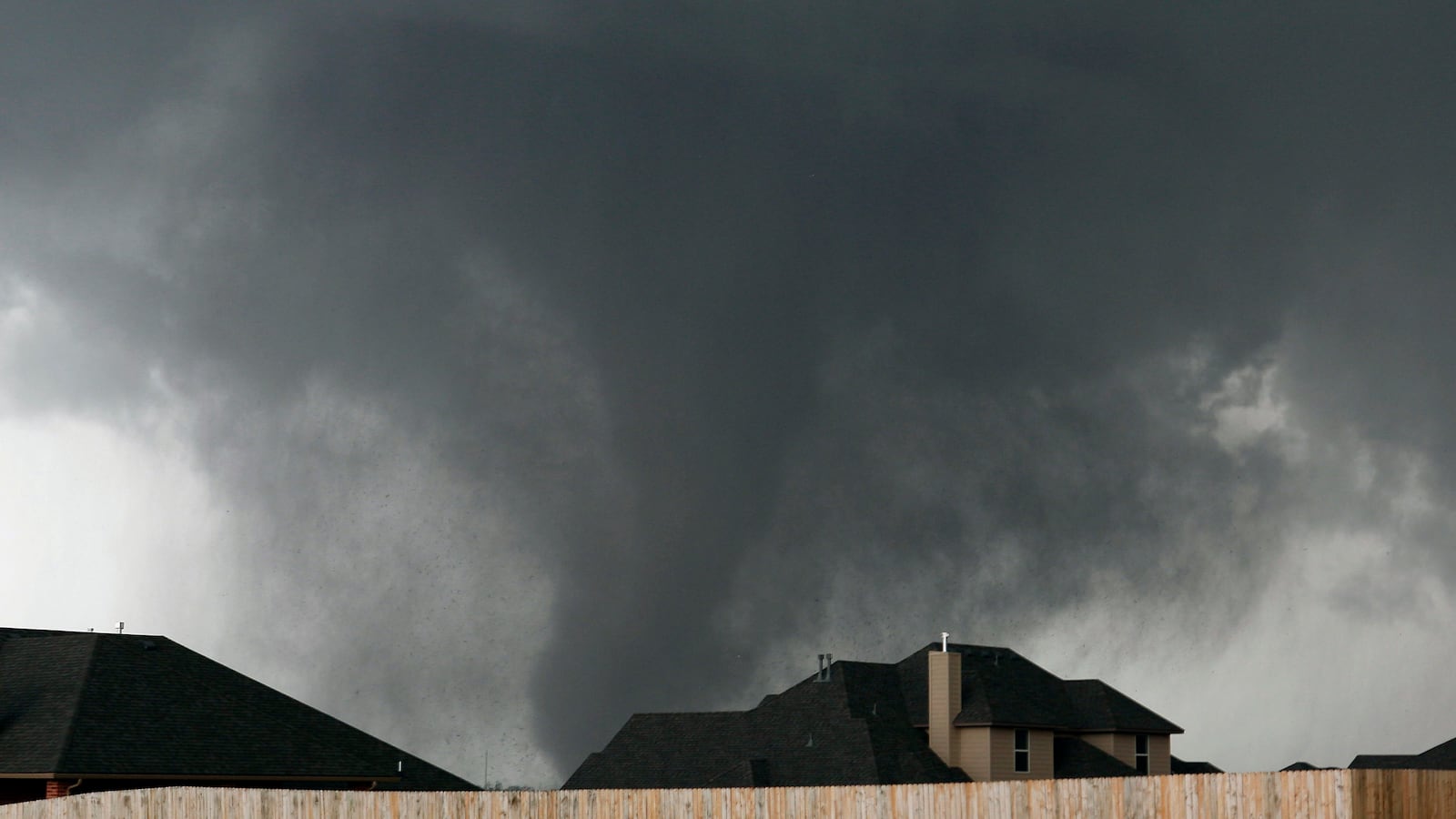As a two-mile-wide tornado loomed over Oklahoma on Monday afternoon, most everyone scrambled for shelter. Except for a few storm chasers, who rushed straight toward the vortex.

They’re nuts, right?
Actually, the most highly regarded storm chasers—and there are highly regarded storm chasers—aren’t out there to satisfy some adrenaline rush or fulfill a death wish. A loose collection of extreme-weather journalists, scientists, and survival experts, their primary responsibility is to report data from the ground to the National Weather Service, which then issues tornado warnings to the areas that are potentially in its path.
And they’re often the first people to bear witness to the destruction.
Chris McBee, a 32-year-old Oklahoma native who has been chasing storms across the Midwest for 10 years, was less than half a mile from the tornado that leveled the town of Moore on Monday afternoon, killing 24 people and injuring hundreds of others. After taking videos of the storm from his van and communicating its approximate size and strength to the National Weather Service, McBee and two fellow storm chasers rushed to affected areas to see what they could do to help.
“It was like a war zone,” McBee said of the town, which has been hit with five tornadoes in the last 15 years. “There were fires from natural-gas explosions and houses swept off their foundations.”
Sadly, this isn’t the first time many of the Moore’s residents have lost their homes. “Moore just can’t catch a break,” said McBee, who added that Monday’s tornado was comparable to the May 3, 1999, twister that devastated the town—the strongest tornado ever recorded in the U.S., with 318-mile-per-hour winds.
At the time of the ’99 twister, McBee was just beginning to pursue his lifelong passion for storm chasing. “When you grow up in Oklahoma, severe weather is a way of life,” he said. “Once I got old enough and graduated from college, I decided I wanted to be a part of the weather community and do what I could to help people prepare for storms.”
As a chaser, it’s his responsibility to relay early storm reports and warnings to the National Weather Service as fast as possible, either by phoning them in or submitting them through a storm responder network. He documents many of his chases and early reports on storm systems on CentralOKStorms.com, a website he founded in 2007 and where networks like CNN and the Weather Channel first discovered some of his footage.
Even in a tornado-prone state like Oklahoma, preparation and swift responses only go so far when you’re up against a monstrous storm system. Still, that hasn’t stopped meteorologists and tornado chasers from trying to figure out how these storms form.
“If we better understood some of the final mechanisms for tornado genesis, our forecasting will be greatly improved,” Tim Samaras, a storm chaser with a background in engineering, told National Geographic.
“We're also trying to address tornado dynamics—how powerful the winds are near the surface—which will help us address some of the engineering issues with home building. Maybe there are some simple things we can do to a house that would help it withstand a [lower-intensity] tornado.”
Warren Faidley, an extreme-weather journalist who has been chasing storms for more than 25 years, is also a certified EMT—a qualification he sought so he could help victims on the ground in addition to reporting there both during and after storms.
But unlike some chasers, he would never drive into the eye of the storm.
“When you put yourself in the middle of the tornado, you take the first responders away from another emergency,” he said. “It’s a big circus act for self-promotion.”





